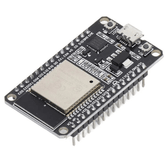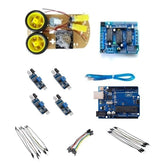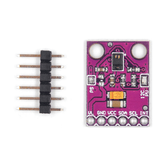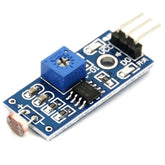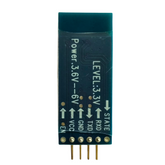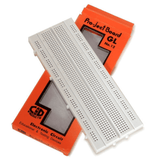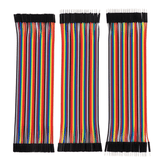Top 10 Robotic Projects for Beginners
Summary
Discover the perfect starting point for your robotics journey with our blog on the "Top 10 Robotic Projects for Beginners." Unveil the exciting world of robotics as we delve into projects like the Line Follower Robot, navigating its path flawlessly. Dodge obstacles with the Obstacle Avoidance Robot and conquer mazes with ease using the Maze Solving Robot. From the versatile Robotic Arm to the futuristic Voice and Gesture Controlled Robots, these projects ignite your creativity. Engage with Bluetooth, Wi-Fi, and Light-Seeking Robots, or compete in the thrilling Robotic Sumo Wrestling arena. Unleash your potential in the realm of robotics!
Introduction
Robotics is a captivating domain that integrates science, technology, and engineering to construct autonomous machines with intelligence. Engaging in the creation of your own robots offers a gratifying and enlightening journey, enabling you to explore the realms of electronics, programming, and problem-solving.
For those new to robotics and eager to commence their exploration, this article is tailored to your needs. We have meticulously curated a catalog of the finest 10 robotic projects specifically designed for beginners. Engaging in these projects will provide invaluable practical knowledge and foster the development of your robotics skills. Let us embark on this exciting journey together!
read more : Top 10 Arduino Projects to Get Started With
1. Line Follower Robot

The line follower robot is a popular project for beginners in robotics. It involves building a robot that can follow a line marked on the ground. This project introduces you to basic robot construction and programming concepts.
Components Required:
- Chassis or robot base
- Infrared sensors (usually 2 or more)
- Microcontroller board (Arduino or Raspberry Pi)
- Motor driver
- DC motors
- Wheels
- Jumper wires
- Breadboard or PCB
- Power source (battery pack or power supply)
To build a line follower robot, you'll need to integrate infrared sensors to detect the line and adjust the robot's movement accordingly. By programming the robot's behavior using algorithms, you can make it follow the line accurately. This project is a great way to understand sensor integration, motor control, and algorithm design.
read more : ROBOCRAZE DIY LINE FOLLOWER KIT
2. Obstacle Avoidance Robot

An obstacle avoidance robot is another excellent project for beginners. This robot is designed to navigate its environment while avoiding obstacles in its path. It introduces you to the concept of reactive behavior in robots and decision-making algorithms.
Components Required:
- Chassis or robot base
- Ultrasonic or infrared sensors
- Microcontroller board (Arduino or Raspberry Pi)
- Motor driver
- DC motors
- Wheels
- Jumper wires
- Breadboard or PCB
- Power source (battery pack or power supply)
To build an obstacle avoidance robot, you'll need to integrate sensors such as ultrasonic or infrared sensors to detect obstacles. By programming the robot to analyze sensor data and change its direction to avoid obstacles, you'll learn about sensor integration, algorithm design, and the basics of autonomous navigation.
read more : Obstacle Avoidance Robot with Ultrasonic Sensors using Arduino
3. Maze Solving Robot

If you enjoy puzzles, building a **maze solving robot** is the perfect project for you. This robot is programmed to navigate through a maze from the start to the end autonomously. It introduces you to path planning algorithms, sensor integration, and mapping.
Components Required:
- Chassis or robot base
- Infrared sensors or ultrasonic sensors
- Microcontroller board (Arduino or Raspberry Pi)
- Motor driver
- DC motors
- Wheels
- Jumper wires
- Breadboard or PCB
- Power source (battery pack or power supply)
To build a maze solving robot, you'll need to integrate sensors to detect walls and dead-ends in the maze. By using path planning algorithms like Depth-First Search or Breadth-First Search, the robot can explore the maze, create a map, and find the optimal path to reach the goal. This project enhances your understanding of algorithmic thinking, sensor integration, and mapping techniques.
Also, read our blog on the Smart Dustbin Project explaining everything from what hardware is required, how it works, pin diagram, and the Arduino code.
read more : ARDUINO BASED WATER LEVEL MONITORING
4. Robotic Arm
Building a robotic arm is a fascinating project that introduces you to the world of robotic manipulators. It involves mechanical design, motor control, and kinematics.
Components Required:
- Robotic arm kit or individual mechanical parts (base, links, and gripper)
- Servo motors or stepper motors
- Microcontroller board (Arduino or Raspberry Pi)
- Motor driver
- Jumper wires
- Breadboard or PCB
- Power source (battery pack or power supply)
To build a robotic arm, you'll need to assemble the mechanical parts and attach motors to control the arm's movement. By programming the motors to rotate at specific angles, you can make the arm perform various tasks such as picking and placing objects. This project gives you insights into mechanical design, motor control, and kinematics.
read more : How NRF24l01 Arduino Nano Works
5. Bluetooth Controlled Robot
The Bluetooth controlled robot project allows you to control a robot wirelessly using your smartphone or a Bluetooth-enabled device. It introduces you to wireless communication and remote control.
Components Required:
- Chassis or robot base
- Microcontroller board (Arduino or Raspberry Pi)
- Motor driver
- DC motors
- Wheels
- Bluetooth module (HC-05 or HC-06)
- Jumper wires
- Breadboard or PCB
- Power source (battery pack or power supply)
To construct a robot controlled via Bluetooth, the integration of a Bluetooth module with the microcontroller is essential. Through the creation of a mobile application or utilizing pre-existing ones, a wireless connection can be established between the robot and your smartphone, granting you the ability to control the robot's movements from a distance. This project facilitates practical involvement in wireless communication, mobile application development, and remote control.
read more : How 433MHz RF Module Works & Interfacing With Arduino
6. Voice Controlled Robot

Building a voice controlled robot allows you to interact with your robot using voice commands. It combines the fields of robotics and natural language processing.
Components Required:
- Chassis or robot base
- Microcontroller board (Arduino or Raspberry Pi)
- Motor driver
- DC motors
- Wheels
- Microphone or voice recognition module
- Jumper wires
- Breadboard or PCB
- Power source (battery pack or power supply)
To build a voice controlled robot, you'll need a microphone or a voice recognition module to capture voice commands. By integrating this module with your robot and programming it to recognize specific voice commands, you can create a robot that responds to your voice. This project introduces you to speech recognition algorithms, microcontroller programming, and human-robot interaction.
read more : Interfacing Proximity Sensors with Arduino
7. Light-Seeking Robot
The light-seeking robot project allows you to delve into the fascinating field of phototaxis, which is the movement of an organism in response to light. You'll explore light sensors, programming, and autonomous behavior.
Components Required:
- Chassis or robot base
- Light sensors (photodiodes or LDRs)
- Microcontroller board (Arduino or Raspberry Pi)
- Motor driver
- DC motors
- Wheels
- Jumper wires
- Breadboard or PCB
- Power source (battery pack or power supply)
To build a light-seeking robot, you'll need light sensors that can detect the intensity and direction of light sources. By programming the robot to move towards or away from light, you can create a robot that exhibits phototactic behavior. This project provides insights into sensor integration, algorithm design, and autonomous navigation.
read more : HOME AUTOMATION USING ARDUINO AND BLUETOOTH
8. Robotic Sumo Wrestler
If you're interested in competitive robotics, building a **robotic sumo wrestler** is an exciting project. It allows you to explore mechanical design, motor control, and strategy development.
Components Required:
- Chassis or robot base
- Microcontroller board (Arduino or Raspberry Pi)
- Motor driver
- DC motors
- Wheels
- Ultrasonic or infrared sensors
- Jumper wires
- Breadboard or PCB
- Power source (battery pack or power supply)
To build a robotic sumo wrestler, you'll need to design and construct a sturdy robot capable of pushing opponents out of a sumo ring. By programming the robot's movements and optimizing its design for stability and traction, you can create a formidable robotic sumo wrestler. This project combines mechanical engineering, programming, and strategic thinking.
read more : How to use Buzzer with Arduino
9. Gesture Controlled Robot
Building a gesture controlled robot allows you to control the robot's movements using hand gestures or motion sensors. It combines the fields of robotics and computer vision.
Components Required:
- Chassis or robot base
- Microcontroller board (Arduino or Raspberry Pi)
- Motor driver
- DC motors
- Wheels
- Gesture sensor or motion sensor (accelerometer or gyroscope)
- Jumper wires
- Breadboard or PCB
- Power source (battery pack or power supply)
To build a gesture controlled robot, you'll need a gesture or motion sensor to capture hand movements or detect specific gestures. By integrating this sensor with your robot and programming it to interpret and respond to the captured gestures, you can create a robot that mimics your hand movements. This project introduces you to computer vision, sensor integration, and gesture recognition algorithms.
read more : LED Interfacing with Arduino
10. Wi-Fi Controlled Robot

The Wi-Fi controlled robot project allows you to control a robot using a Wi-Fi connection, enabling you to operate it remotely over the internet. It combines robotics, networking, and remote control.
Components Required:
- Chassis or robot base
- Microcontroller board (Arduino or Raspberry Pi)
- Motor driver
- DC motors
- Wheels
- Wi-Fi module (ESP8266 or ESP32)
- Jumper wires
- Breadboard or PCB
- Power source (battery pack or power supply)
To build a Wi-Fi controlled robot, you'll need a Wi-Fi module to establish a connection between the robot and your computer or smartphone. By developing a web-based interface or using existing apps, you can control the robot's movements remotely over a Wi-Fi network. This project provides insights into networking, web development, and remote control.
read more : HAND WASH TIMER USING ARDUINO
Conclusion
Embarking on a journey into robotics as a beginner can be both challenging and rewarding. The projects listed above offer a great starting point for your exploration of this exciting field. Each project introduces you to different aspects of robotics, from basic construction and programming to advanced concepts like autonomous navigation and human-robot interaction.
Remember, the key to success is to start with simpler projects and gradually increase the complexity as you gain more experience and confidence. As you complete these projects, you'll not only enhance your technical skills but also develop your creativity and problem-solving abilities.
So, roll up your sleeves, gather the required components, and dive into the world of robotics. Happy building!
If you appreciate our work don't forget to share this post and leave your opinion in the comment box.
Please do check out other blog posts about Popular electronics
Make sure you check out our wide range of products and collections (we offer some exciting deals!)







